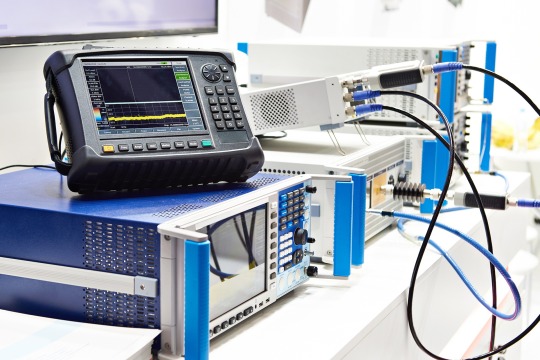#Telecom Service Assurance Market
Explore tagged Tumblr posts
Text
Telecom Service Assurance Market Overview: Key Innovations and Future Trends 2032
Telecom Service Assurance Market size was valued at USD 9.8 billion in 2023 and is expected to grow to USD 22.6 billion by 2032 and grow at a CAGR of 9.8 % over the forecast period of 2024-2032
The Telecom Service Assurance Market is experiencing rapid growth as telecom operators seek to enhance network performance, ensure seamless service delivery, and improve customer experience. The rising adoption of 5G, IoT, and cloud-based solutions is driving demand for advanced assurance tools. With increasing network complexities, telecom providers are investing in AI-driven analytics and automation to optimize operations.
The Telecom Service Assurance Market continues to expand as service providers focus on minimizing downtime, reducing operational costs, and enhancing service quality. The growing reliance on digital communication, coupled with increasing customer expectations, is pushing telecom companies to adopt real-time monitoring and predictive analytics solutions. As networks become more software-driven, assurance solutions are evolving to ensure reliability, security, and efficiency.
Get Sample Copy of This Report: https://www.snsinsider.com/sample-request/3679
Market Keyplayers:
Nokia (Nokia AVA, Nokia NetGuard)
Huawei Technologies Co., Ltd. (Huawei SmartCare, Huawei U2020)
Ericsson (Ericsson Expert Analytics, Ericsson Network IQ)
NEC Corporation (NetCracker Service Assurance, NEC iPASOLINK)
Amdocs (Amdocs SmartOps, Amdocs CES)
IBM Corporation (IBM Netcool, IBM SevOne)
Comarch S.A. (Comarch Service Assurance, Comarch OSS Suite)
Accenture (Accenture Intelligent Operations, Accenture Network Assurance)
Tata Consultancy Services (TCS) (TCS Digital Service Assurance, TCS HOBS)
EXFO Inc. (EXFO Nova, EXFO Active Testing)
Market Trends Driving Growth
1. AI and Automation in Service Assurance
Telecom operators are leveraging AI and automation to enhance network monitoring, detect issues proactively, and optimize service delivery. Predictive analytics and self-healing networks are improving operational efficiency and reducing manual intervention.
2. Cloud-Based and Virtualized Networks
With the shift towards cloud-native architectures and virtualized networks, service assurance solutions are evolving to support Software-Defined Networking (SDN) and Network Function Virtualization (NFV). These technologies enable scalability, flexibility, and faster deployment of network services.
3. The Impact of 5G Deployment
The global rollout of 5G networks is significantly driving demand for advanced service assurance solutions. High-speed connectivity, low latency, and increased network complexity require telecom operators to adopt real-time performance monitoring tools.
4. Customer Experience Enhancement
Service assurance is no longer just about network performance; it plays a crucial role in customer experience management. Telecom providers are using analytics-driven insights to improve service quality, reduce complaints, and enhance overall user satisfaction.
5. Growing Demand for Security and Compliance
As cyber threats and regulatory requirements increase, telecom companies are integrating security-focused assurance solutions. These tools help monitor vulnerabilities, detect fraud, and ensure compliance with industry standards.
Enquiry of This Report: https://www.snsinsider.com/enquiry/3679
Market Segmentation:
By Component
Solution
Probe System
Network Management
Workforce Management
Fault Management
Quality Monitoring
Others
Services
Professional Services
Managed Services
By Operator
Mobile Operator
Fixed Operator
By Deployment
On-premise
Cloud
By Enterprise Size
Large Enterprises
Small & Medium Enterprises
Market Analysis and Current Landscape
Key factors driving this growth include:
Rising Network Complexity: The integration of IoT, cloud computing, and 5G technology is increasing the need for real-time assurance solutions.
Increased Adoption of AI and Machine Learning: Automation is enabling predictive maintenance, reducing service disruptions, and improving operational efficiency.
Growing Investments in Digital Transformation: Telecom providers are modernizing their infrastructure with cloud-based and software-defined solutions to enhance agility.
Competitive Landscape: Leading players such as Ericsson, Nokia, Huawei, and Cisco are investing in AI-driven assurance solutions to maintain their market leadership.
Despite strong growth prospects, challenges such as high implementation costs, integration complexities, and data security concerns remain. However, ongoing innovations in AI, cloud computing, and automation are helping address these issues effectively.
Regional Analysis: Key Growth Markets
North America: Leading the market with significant investments in 5G infrastructure and AI-powered assurance solutions. The presence of major telecom companies and increasing demand for high-speed connectivity are driving growth.
Europe: Witnessing steady growth with regulatory compliance requirements and digital transformation initiatives shaping the market. Countries like Germany, the UK, and France are key contributors.
Asia-Pacific: Expected to see the highest growth rate due to rapid urbanization, expanding 5G networks, and increasing smartphone penetration. Major markets include China, India, and Japan.
Middle East & Africa: Emerging as a growth hub with rising telecom investments and government-led digital transformation initiatives.
Latin America: Experiencing moderate growth with telecom providers focusing on expanding network infrastructure and improving service quality.
Future Prospects: What Lies Ahead?
1. AI-Driven Predictive Assurance
AI-powered assurance solutions will continue to evolve, enabling telecom operators to anticipate and resolve network issues before they impact customers.
2. Expansion of 5G and Edge Computing
The proliferation of 5G and edge computing will require enhanced assurance capabilities to manage ultra-low latency applications and mission-critical services.
3. Shift Towards Open and Interoperable Solutions
As telecom networks become more open and software-driven, service assurance solutions will need to be interoperable, supporting multi-vendor environments.
4. Integration with IoT and Smart Cities
The increasing adoption of IoT in industries and smart city initiatives will create new demand for real-time assurance solutions to monitor and manage connected devices.
5. Enhanced Security and Compliance Solutions
Cybersecurity and regulatory compliance will become integral to service assurance, with telecom providers adopting AI-based security monitoring and fraud detection tools.
Access Complete Report: https://www.snsinsider.com/reports/telecom-service-assurance-market-3679
Conclusion
The Telecom Service Assurance Market is poised for significant growth as telecom operators prioritize network optimization, service quality, and customer experience. With the expansion of 5G, AI-driven automation, and cloud-based networks, service assurance solutions will play a crucial role in ensuring seamless connectivity and operational efficiency. As the industry continues to evolve, investment in innovative assurance technologies will be key to maintaining competitive advantage and meeting the growing demands of digital connectivity.
About Us:
SNS Insider is one of the leading market research and consulting agencies that dominates the market research industry globally. Our company's aim is to give clients the knowledge they require in order to function in changing circumstances. In order to give you current, accurate market data, consumer insights, and opinions so that you can make decisions with confidence, we employ a variety of techniques, including surveys, video talks, and focus groups around the world.
Contact Us:
Jagney Dave - Vice President of Client Engagement
Phone: +1-315 636 4242 (US) | +44- 20 3290 5010 (UK)
#Telecom Service Assurance Market#Telecom Service Assurance Market Analysis#Telecom Service Assurance Market Scope#Telecom Service Assurance Market Trends
0 notes
Text
Eye 1968-michaelharrelljr.com's Private Multinational [PM] Government Telecommunications Project [GTP] Domain @ quantumharrelltelecom.tech
WELCOME BACK HOME IMMORTAL [HIM] U.S. MILITARY KING SOLOMON-MICHAEL HARRELL, JR.™

i.b.monk [ibm.com] mode [i’m] tech [IT] steelecartel.com @ quantumharrelltech.ca.gov

quantumharrelltech.ca.gov Outside Our 1921steelecartel.tech MACHINE SKY Firmament Domain DOME… OVER Earth [Qi]

1968-michaelharrelljr.com ANU GOLDEN 9 ETHER [AGE] kingtutdna.com Genetic LUZ Clone KING OF KINGS LORD OF LORDS… Under the Shadow [U.S.] of Invisible DEATH [I.D.] LANGUAGE RITUALS in Old America [MU ATLANTIS]

HALLO

Ngingathanda ukukhuluma noMichael?

yon moman tanpri

בטוח

prendi il messaggio per favore

ok

snälla Översätt

Mahadsanid

© 1698-2223 quantumharrelltech.com - ALL The_Octagon_(Egypt) DotCom [D.C.] defense.gov Department Domain Communication [D.C.] Rights Reserved @ quantumharrelltech.ca.gov
#telecom industry#telecom infrastructure#u.s. michael harrell#quantumharrelltech#king tut#mu:13#kemet#harrelltut#o michael#quantumharrelltut#telecom services market#telecom operators#telecom service assurance#automation#security#analytics#compliance#software#department of defense#the pentagon#chatgpt#discord chat#just chatting#text me
1 note
·
View note
Link
#adroit market research#telecom service assurance#telecom service assurance 2020#telecom service assurance size#telecom service assurance shar
0 notes
Link
#adroit market research#telecom service assurance#telecom service assurance 2020#telecom service assurance size#telecom service assurance shar
0 notes
Text
How Indian Businesses Can Benefit from VoIP Services for International Calling
With the continued trend of globalization, Indian organizations are searching for efficient and lower priced communique answers to increase their global attain. VoIP (Voice over Internet Protocol) offerings, mainly through Sinch Voice Service, provide a powerful solution for Indian organizations to simplify their worldwide calling process even as cutting prices.

Cost Savings and Affordability
One of the most important advantages of using Sinch's VoIP service for international calling is the immense cost savings. International phone lines for communication can be costly, particularly for companies that need to make a lot of global calls. VoIP services, but, use the net to switch voice statistics, which significantly minimizes the cost of long-distance communication. By taking gain of Sinch's low-cost pricing models, Indian agencies are capable of make global calls at a fragment of the price of conventional telecom services.
Enhanced Call Quality and Reliability
Sinch Voice Service provides quality voice call with low latency, providing crystal-clear communication even in long-distance calls. VoIP technology has greatly improved, and Sinch's strong infrastructure means that Indian businesses can count on consistent and stable international communication, which is crucial for ensuring seamless operations and strong customer and partner relationships.
Global Reach with Local Presence
With Sinch's VoIP solutions, Indian companies can have a global presence without having to set up physical offices overseas. With local virtual numbers in different countries, companies can offer customers local contact numbers, which increases trust and convenience. This is especially helpful for customer support, sales, or any company that has international operations.
Scalability and Flexibility
Sinch's VoIP solutions provide scalability, enabling Indian companies to adapt quickly to varying communications requirements. From expanding operations or managing seasonal spikes in customer inquiries, the adaptability of VoIP provides assurance that companies can scale their global calling infrastructure in a cost-effective manner.
In summary, Sinch Voice Service provides Indian companies with an affordable, trustworthy, and flexible method for improving international communication. With the implementation of VoIP technology, companies can increase efficiency, save costs, and remain competitive in the international market.
More Resources:
How VOIP services for international calling are impacting the Indian IT and BPO Industry
Cost Savings with Voice API
3 notes
·
View notes
Text
Top Trends Reshaping the GCC Data Centre Landscape This Year

Unraveling the Exponential Rise of the GCC Data Center Market Ecosystem
The Gulf Cooperation Council data center market stands at the forefront of regional digital transformation, propelled by surging demand for resilient IT infrastructure, AI integration, and edge computing capabilities. As we project forward, the GCC data center market-valued at USD 5.87 billion in 2024—is set to experience a seismic expansion, reaching an anticipated USD 33.05 billion by 2031, growing at a CAGR of 12.3%. This trajectory is underpinned by high-performance computing demands, smart city initiatives, sovereign digital strategies, and the accelerated adoption of hybrid cloud frameworks.
Request Sample Report PDF (including TOC, Graphs & Tables): https://www.statsandresearch.com/request-sample/40593-data-center-industry-analysis
Technological Drivers Reshaping GCC’s Digital Backbone
Edge Computing and AI: Catalysts of Infrastructure Evolution
The fusion of edge computing and artificial intelligence is redefining the physical and operational contours of data center infrastructure. These technologies enable real-time data processing, lower latency, and enhanced bandwidth efficiency—essentials in a region increasingly reliant on IoT, autonomous systems, and immersive media.
Edge Data Centers are proliferating across urban and remote industrial zones to reduce network latency and support mission-critical applications in telecom, logistics, and smart utilities.
AI-powered infrastructure management enables predictive maintenance, workload optimization, and autonomous scalability, aligning with sustainability goals and uptime assurance.
Cloud-Native Transformation and Multi-Cloud Adoption
Enterprise and government adoption of hybrid and multi-cloud ecosystems is fueling demand for flexible, modular, and scalable data centers. Organizations are rapidly transitioning from legacy systems to cloud-native architectures that support containerization, orchestration (e.g., Kubernetes), and zero-trust security postures.
Get up to 30%-40% Discount: https://www.statsandresearch.com/check-discount/40593-data-center-industry-analysis
Key GCC Data Center Market Segments and Growth Benchmarks:
Data Center Types: Segment-Wise Expansion
Enterprise Data Centers dominate current deployment, with projections reaching USD 12.69 billion by 2031. These are favored by banks, government entities, and large corporations for security, compliance, and customization.
Edge Data Centers, expected to grow at a CAGR of 13.3%, are essential for latency-sensitive operations—especially in retail, telecom, and autonomous industries.
By Component: IT Infrastructure Leads the Stack
IT Infrastructure, valued at USD 7.27 billion in 2024, comprises compute, storage, and networking units. The sector will nearly double by 2031, reaching over USD 16 billion.
Management Software emerges as the fastest-growing component (13.9% CAGR), driven by demand for automated orchestration, resource analytics, and energy optimization.
Tier Standards: Reliability as a Strategic Differentiator
Tier III Data Centers remain the enterprise standard for redundancy and availability, offering a balance between cost-efficiency and resilience.
Tier IV Data Centers are witnessing increased adoption in financial and defense sectors due to their fault-tolerant architectures and unmatched uptime assurance.
Enterprise Demand: SME Acceleration and Enterprise Stability
Large Enterprises will remain dominant consumers, owing to vast operational scale and stringent compliance requirements.
SMEs, however, will outpace in growth (12.8% CAGR), increasingly leveraging colocation and cloud-managed data services to fuel innovation and agility.
Industry Verticals: IT and Telecom Anchor Growth
IT & Telecom, accounting for USD 3.83 billion in 2024, drive GCC data center market dominance through robust connectivity and digital service demand.
Retail, with the highest CAGR of 13.3%, is expanding rapidly due to rising e-commerce penetration and digital payment infrastructure.
Geographic Landscape: Market Expansion Across the GCC
United Arab Emirates: The Regional Nucleus of Digital Infrastructure
With a GCC data center market value of USD 4.91 billion in 2024, the UAE leads in regional data center development. Its progressive regulatory landscape, free zones (like Dubai Internet City), and focus on AI strategy and cloud governance position it as the premier data hub.
Saudi Arabia: Hyper-Scaling Through Vision 2030
Saudi Arabia's Vision 2030 initiatives are accelerating digital infrastructure deployment. Projected to grow at a CAGR of 12.7%, the Kingdom is investing in hyperscale facilities and AI-integrated networks to empower its Smart Nation ambitions and government digital services.
GCC Data Center Market Forces and Challenges
GCC Data Center Market Growth Drivers
Proliferation of smart city initiatives, such as NEOM and Masdar.
National cloud-first policies and rising government investments.
Accelerated digital adoption across BFSI, healthcare, and manufacturing.
Constraints and Strategic Hurdles
Acute skills shortage in high-density data center operations.
Escalating OPEX due to cooling and power requirements in desert climates.
Regulatory complexities and varying data sovereignty frameworks across GCC nations.
Key Players and Strategic Developments
Major incumbents and rising challengers are reshaping the competitive landscape through aggressive capital expenditures, greenfield projects, and regional collaborations.
Major Developments
Batelco’s White Space Data Center in Bahrain, developed with Almoayyed Contracting Group, introduces a high-density, energy-efficient facility adjacent to a solar farm—marking a regional milestone in sustainable infrastructure.
Ooredoo’s USD 1 billion investment, backed by QAR 2 billion in financing, aims to scale their data center capacity beyond 120MW, with AI and cloud infrastructure at the core.
GCC Data Center Market Leaders
Equinix – Expanding interconnection hubs and hybrid cloud onramps.
Khazna Data Centers – Driving hyperscale growth with government-backed investment.
STC Solutions and Mobily – Enhancing regional content delivery and 5G edge integration.
Microsoft Azure – Strengthening sovereign cloud services and AI deployment.
Strategic Outlook and Market Forecast
The GCC data center market is rapidly transitioning from traditional IT support roles to becoming central to digital economic competitiveness. As sovereign data strategies, AI integration, and decentralized architectures take hold, the region’s data center industry is set to become one of the fastest-growing globally.
By 2031, Tier IV and Edge Data Centers will define market leadership.
Public-private partnerships, sovereign fund allocations, and energy innovations will drive infrastructure resilience and global competitiveness.
Green data centers, leveraging renewable energy and liquid cooling technologies, will gain prominence amid growing environmental mandates.
Purchase Exclusive Report: https://www.statsandresearch.com/enquire-before/40593-data-center-industry-analysis
Final Word
We are entering a transformative era in the GCC’s digital infrastructure ecosystem. The convergence of policy, technology, and private capital is accelerating the rise of a hyperconnected, data-driven Gulf economy. Those who invest now in future-ready, AI-integrated, edge-enabled data center architecture will lead the next chapter of the region’s digital revolution.
Our Services:
On-Demand Reports: https://www.statsandresearch.com/on-demand-reports
Subscription Plans: https://www.statsandresearch.com/subscription-plans
Consulting Services: https://www.statsandresearch.com/consulting-services
ESG Solutions: https://www.statsandresearch.com/esg-solutions
Contact Us:
Stats and Research
Email: [email protected]
Phone: +91 8530698844
Website: https://www.statsandresearch.com
1 note
·
View note
Text
Top Technical Skills for Electronics Engineer Resume in 2024
Electronics and Communication Engineering (ECE) offers a wide array of career opportunities due to its interdisciplinary nature, combining principles from electronics, telecommunications, and computer science. Here are the top 15 career options for graduates in this field:
1. Telecom Engineer
Telecom engineers design and manage communication systems, including optical fibers, microwave transmission, and IP networks. They analyze existing technologies and develop new solutions to enhance communication reliability and efficiency.
2. R&D Software Engineer
These engineers focus on creating and testing new software products. They play a crucial role in research and development, working on automation and mechanical controls to improve software systems across various industries.
3. Software Analyst
Software analysts design, develop, and test software applications, ensuring they meet user needs. They act as a bridge between developers and users, managing software updates and enhancing user experience.
4. Electronic Design Engineer
Electronic design engineers create electronic circuits and devices tailored to specific requirements. They work on projects ranging from consumer electronics to complex communication systems.
5. Embedded Systems Engineer
Embedded systems engineers develop software for embedded systems found in various devices like appliances, medical equipment, and automotive systems. This role requires proficiency in both hardware and software development.
6. Network Engineer
Network engineers design, implement, and manage computer networks within organizations. They ensure network security and optimize performance for efficient data transfer.
7. Service Engineer
Service engineers maintain and repair electronic equipment used in various industries. Their work ensures that systems operate smoothly, minimizing downtime for businesses.
8. Technical Sales Engineer
In this role, engineers leverage their technical knowledge to sell complex electronic products or services. They often work closely with clients to understand their needs and provide tailored solutions.
9. Quality Assurance Engineer
Quality assurance engineers focus on testing products to ensure they meet required standards before they are released to the market. This role involves developing testing protocols and analyzing results to improve product quality.
10. Systems Engineer
Systems engineers oversee the integration of various subsystems into a complete system, ensuring all components work together effectively. This role is critical in projects involving complex electronic systems.
11. Electronics Technician
Electronics technicians assist in the design, development, and testing of electronic equipment. They often work under the supervision of engineers to troubleshoot issues and perform repairs.
12. Data Analyst
Data analysts in the ECE field focus on interpreting data related to electronic systems or communications networks. They use statistical tools to provide insights that can improve system performance or user experience.
13. Technical Director
Technical directors oversee engineering projects from conception through execution, ensuring technical feasibility while managing teams of engineers. They play a pivotal role in strategic planning within organizations.
14. Chief Technical Officer (CTO)
As a senior executive, the CTO is responsible for overseeing the technological direction of a company. This role involves strategic decision-making regarding technology investments and innovations.
15. Research Scientist
Research scientists in ECE focus on advancing knowledge in areas like telecommunications or signal processing through experimental research or theoretical analysis. This role often requires advanced degrees (MTech or PhD) for positions in academia or specialized industries.
Conclusion
Arya College of Engineering & I.T. is the Best Engineering College in Jaipur that gives career landscape for Electronics and Communication Engineers is diverse and continually evolving due to rapid technological advancements. Graduates can choose from various roles across multiple sectors including telecommunications, IT, manufacturing, aerospace, healthcare, and more, making ECE a promising field for aspiring professionals seeking dynamic career paths.
2 notes
·
View notes
Text
SMS Firewall Market Fueling the Next Wave of Messaging Security for Telcos Worldwide
The SMS Firewall Market Size was valued at USD 2.7 Billion in 2023. It is expected to grow to USD 5.9 Billion by 2032 and grow at a CAGR of 9.2% over the forecast period of 2024-2032.
SMS Firewall Market is gaining traction as mobile operators and enterprises combat growing threats like SMS fraud, grey routing, and spam. With rising mobile penetration, SMS continues to be a critical channel for business communication and authentication, making firewall solutions a frontline defense for network security and revenue assurance.
U.S. Drives Early Adoption with Carrier-Grade Security Prioritization
SMS Firewall Market continues to evolve rapidly as telecom operators, particularly across the U.S. and Europe, adopt more advanced filtering mechanisms and AI-powered monitoring to ensure secure, clean messaging traffic. Regulatory compliance, rising A2P messaging demand, and operator concerns about subscriber trust are pushing innovation and investment in SMS firewall technologies.
Get Sample Copy of This Report: https://www.snsinsider.com/sample-request/3535
Market Keyplayers:
AdaptiveMobile SecurityBICSCellusysComvivaInfobip Ltd.MobileumMonty MobileProofpointSinchTATA CommunicationsTwilioNexmoCloudMarkFortinetSymantecOpenMarketViberAmdocsZenviaMessageBird
Market Analysis
The SMS Firewall Market is being driven by the surge in A2P (Application-to-Person) messaging, which is increasingly used for alerts, OTPs, promotions, and customer service. However, this growth also exposes networks to SMS phishing, smishing, and revenue leakages due to grey routes. Telecom operators, especially in the U.S., are aggressively deploying firewalls to detect and block suspicious traffic in real time. In Europe, data privacy regulations like GDPR further strengthen the need for robust SMS security solutions that ensure message integrity and compliance.
Market Trends
Rise in demand for next-gen firewalls integrated with machine learning
Increasing telecom operator partnerships with cybersecurity vendors
Rapid migration from legacy systems to cloud-native SMS firewall platforms
Growing deployment of AI for anomaly detection and traffic profiling
Compliance-driven innovations to meet regional regulations (e.g., GDPR, FCC)
Expansion of multi-layered firewall solutions for holistic message screening
Market Scope
The scope of the SMS Firewall Market is expanding as operators and enterprises shift focus from basic filtering to proactive threat intelligence. Market participants are prioritizing comprehensive monitoring and dynamic rule sets.
Real-time traffic filtering and fraud prevention
Grey route blocking and revenue protection
AI-enhanced behavioral analytics
A2P message authentication and routing control
Regulatory compliance support
Multi-channel threat management integrations
Forecast Outlook
The SMS Firewall Market is expected to witness continued growth, fueled by escalating mobile transactions, regulatory scrutiny, and the need to preserve revenue streams. Future-ready firewalls with AI, analytics, and real-time threat detection capabilities will be critical as the messaging landscape becomes more complex. In both developed and emerging regions, operators will seek cost-effective, scalable, and compliant solutions that safeguard subscriber experience and brand reputation.
Access Complete Report: https://www.snsinsider.com/reports/sms-firewall-market-3535
Market Opportunities
AI-Driven Firewalls: Significant opportunity in adopting machine learning algorithms for smart filtering and traffic prediction.
Enterprise Messaging Security: Rising demand from banks, e-commerce, and healthcare sectors for secure A2P delivery.
Managed Security Services: Growth in outsourced SMS firewall management as telcos seek efficiency and expertise.
Regional Customization: Tailored firewall capabilities to meet country-specific regulations and traffic behaviors.
5G & IoT Messaging: Expansion of SMS in connected devices opens new frontiers for firewall innovation.
Conclusion
As SMS remains a trusted channel for real-time communication, securing it has become non-negotiable. The SMS Firewall Market stands as a critical pillar in defending telecom infrastructure, ensuring message authenticity, and protecting user trust. From Silicon Valley to Berlin, operators and enterprises alike are investing in intelligent firewall solutions that go beyond blocking threats—they enable smarter, safer messaging ecosystems. The market is not just growing—it’s becoming essential to the future of mobile communication.
About Us:
SNS Insider is one of the leading market research and consulting agencies that dominates the market research industry globally. Our company's aim is to give clients the knowledge they require in order to function in changing circumstances. In order to give you current, accurate market data, consumer insights, and opinions so that you can make decisions with confidence, we employ a variety of techniques, including surveys, video talks, and focus groups around the world.
Related Reports:
U.S.A. embraces innovation with rising adoption of self-checkout systems across retail chains
Contact Us:
Jagney Dave - Vice President of Client Engagement
Phone: +1-315 636 4242 (US) | +44- 20 3290 5010 (UK)
Mail us: [email protected]
0 notes
Text
Why Choosing the Right Electronics Manufacturing Services Provider in India Matters for Your Business

The global demand for smart devices, IoT systems, automotive electronics, and industrial automation is driving unprecedented growth in the electronics manufacturing sector. Businesses worldwide are increasingly looking to India for reliable, cost-effective, and innovative electronics manufacturing solutions. But what exactly makes an Electronics Manufacturing Services (EMS) provider in India the ideal partner for your company? And why is India becoming a preferred hub for electronics production?
Let’s explore the evolution of India’s EMS industry, what to look for in a partner, and why forward-thinking companies are choosing EMS providers like Resolute GOC to stay competitive.
The Rise of EMS Providers in India
Over the past decade, India has rapidly grown into a significant player in the global electronics supply chain. Favorable government policies like the Production Linked Incentive (PLI) scheme, growing domestic demand, and improvements in manufacturing infrastructure have all contributed to this rise.
EMS providers in India now offer end-to-end solutions that include:
- Design and prototyping
- Printed circuit board assembly (PCBA)
- System integration
- Testing and quality assurance
- Aftermarket support and logistics
These capabilities help global companies reduce time-to-market, manage costs, and ensure consistently high product quality.
Benefits of Partnering with an EMS Provider in India
1) Cost efficiency: One of the biggest advantages is lower production costs. Competitive labor rates, reduced operational overheads, and proximity to a robust supplier network allow EMS providers in India to deliver quality products at competitive prices.
2) Advanced technology: Top EMS providers in India invest heavily in modern SMT lines, testing equipment, and automated systems to deliver precision and consistency, even for complex electronic assemblies.
3) Scalability: Whether you’re launching a new product or ramping up production to meet seasonal demand, Indian EMS partners can quickly scale operations without compromising quality.
4) Focus on innovation: Beyond manufacturing, leading EMS providers offer design support and value engineering. This helps optimize product designs for manufacturability, cost, and performance.
5) Supply chain flexibility: Strategically located manufacturing hubs reduce shipping times for domestic markets and facilitate global exports.
6) Quality standards: Top EMS companies comply with international certifications like ISO, RoHS, and IPC standards, ensuring products meet global benchmarks.
What to Look for in an Electronics Manufacturing Services Provider in India
Choosing the right EMS partner is critical for long-term success. Here are key factors to consider:
a) Experience and expertise: Look for a partner with a proven track record across industries like automotive, telecom, healthcare, and consumer electronics.
b) End-to-end capabilities: An ideal partner should offer comprehensive services: design, prototyping, PCB assembly, system integration, and testing.
c) Flexibility: Your partner should handle both small-batch custom projects and high-volume production runs efficiently.
d) Technology and equipment: Modern production lines, automated optical inspection (AOI), X-ray testing, and advanced SMT machines ensure precision and reliability.
e) Quality assurance: Strong quality control processes and certifications demonstrate a commitment to meeting international standards.
f) Transparent communication: A good EMS partner keeps clients informed, offers design suggestions, and proactively addresses potential challenges.
g) Sustainability focus: Look for companies that follow environmentally responsible manufacturing practices, which is increasingly important for brand reputation and compliance.
Resolute GOC: Delivering Excellence in EMS
Among the many EMS providers in India, Resolute GOC stands out for its commitment to quality, innovation, and customer-centric services. Here’s what makes them a trusted partner for companies seeking electronics manufacturing solutions:
End-to-end services: Resolute GOC supports every stage of your product’s journey—from design and prototyping to mass production and post-sales service.
Cutting-edge infrastructure: The company invests in state-of-the-art SMT lines, automated testing equipment, and ERP systems to ensure seamless production and real-time tracking.
Custom solutions: Whether it’s a complex assembly or a large-volume order, Resolute GOC tailors solutions to meet each client’s unique requirements.
Global quality standards: By adhering to ISO certifications and rigorous quality testing protocols, the company ensures products meet or exceed global benchmarks.
Client partnership model: Resolute GOC operates as an extension of your team, providing design support, cost optimization, and market agility.
Commitment to sustainability: By following RoHS-compliant processes and adopting eco-friendly practices, Resolute GOC aligns manufacturing with modern environmental standards.
How EMS Providers Add Strategic Value
Beyond cost savings, working with an EMS provider like Resolute GOC brings strategic benefits:
Faster time-to-market: Streamlined design and production cycles mean products can launch sooner, giving you a competitive edge.
Innovation support: Design for manufacturability (DFM) reviews and engineering expertise help create more reliable and cost-effective products.
Focus on core business: By outsourcing manufacturing, companies can redirect resources toward branding, R&D, and market expansion.
Risk reduction: A reliable EMS partner helps navigate challenges like component shortages, compliance changes, and market fluctuations.
The Future of Electronics Manufacturing in India
India’s electronics manufacturing sector is poised for continued growth, driven by:
- Government incentives and investment in semiconductor production
- Increasing demand for 5G, IoT, electric vehicles, and consumer electronics
- Expanding skilled workforce and technological advancements
As global businesses seek to diversify supply chains, India offers the right blend of expertise, scalability, and innovation.
Conclusion
Choosing the right Electronics Manufacturing Services Provider in India is about more than just outsourcing production. It’s about partnering with a company that can bring your ideas to life, ensure quality and compliance, and help your business adapt to an ever-changing market.
Resolute GOC’s blend of advanced technology, deep expertise, and commitment to customer success makes them a trusted choice for businesses aiming to stay ahead in the electronics industry.
If you’re exploring a manufacturing partner for your next product or looking to scale your operations, partnering with a proven EMS provider in India can be the competitive advantage your brand needs.
0 notes
Text
Call center suite supplier Company in Dubai
In today’s experience-driven market, businesses in Dubai are under pressure to offer fast, responsive, and multichannel customer support. Whether you're in banking, healthcare, logistics, real estate, or e-commerce—your ability to deliver high-quality service determines your growth. That’s where Aria Telecom, a leading call center suite supplier company in Dubai, comes in with its all-in-one, scalable communication platform.
Unlike traditional systems that focus solely on voice, a call center suite goes much further. It unifies calls, SMS, WhatsApp, live chat, email, CRM integration, IVR, and analytics—giving you full control over your customer journey from one place. As one of the most trusted names in telecom technology in the UAE, Aria Telecom helps businesses modernize their support systems without complexity or high costs.
Why You Need a Call Center Suite, Not Just a Call Center
A standalone phone line or basic calling software no longer meets customer expectations. Today’s consumers expect:
24/7 availability
Support across multiple platforms (voice, chat, WhatsApp)
Fast query resolution
Personalized service
By partnering with a reliable call center suite supplier company in Dubai like Aria Telecom, you equip your team with tools to:
Route calls intelligently based on skill, time, or language
Provide consistent service across platforms
Use customer history to personalize interactions
Track agent performance and service metrics in real-time
From small customer support teams to full-fledged enterprise contact centers, our suite grows with your needs.
Core Features of Aria Telecom’s Call Center Suite
✅ Omnichannel Integration Handle calls, emails, WhatsApp, live chat, and SMS from a single dashboard.
✅ IVR & Smart Routing Customizable IVRs that guide customers to the right department or agent quickly.
✅ Auto Dialers Speed up outbound calling with predictive, progressive, and preview dialers.
✅ Real-Time Analytics Track metrics like call wait time, agent productivity, missed calls, and response rate.
✅ CRM Connectivity Integrate with CRMs like Salesforce, Zoho, HubSpot, or custom ERPs to streamline communication.
✅ Call Recording & Quality Monitoring Record and review interactions for compliance, training, and quality assurance.
✅ Data Privacy Compliance Ensure security with end-to-end encryption and alignment with UAE data protection regulations.
With Aria Telecom, you don’t just get software—you get a complete ecosystem for modern business communication.
Why Aria Telecom is a Top Supplier in Dubai
As a call center suite supplier company in Dubai, Aria Telecom offers a powerful blend of advanced technology and regional business insight. We understand the multilingual, multicultural, and fast-moving nature of Dubai’s market—and our solutions reflect that.
What sets us apart?
✅ Cloud and On-Premise Flexibility
✅ UAE-Based Deployment & Support Teams
✅ Multilingual IVR and UI (Arabic, English, Hindi, Urdu)
✅ Fast Setup – Go Live in 3 to 5 Days
✅ Affordable, Scalable Pricing Models
Whether you’re a startup or an established enterprise, we help you deliver consistent, high-quality customer service across all touchpoints.
Industries We Serve in Dubai
🏥 Healthcare – Patient bookings, appointment reminders, emergency helplines
🏨 Hospitality – Reservation confirmations, concierge queries, guest feedback
🏢 Real Estate – Site visit scheduling, lead follow-ups, sales team automation
🛍️ Retail & E-commerce – Order tracking, delivery updates, returns
🏦 Banking & Insurance – Loan processing, claims support, collections
No matter your sector, our technology helps you stay ahead of the competition and closer to your customers.
#CallCenterSuiteDubai#AriaTelecomUAE#OmnichannelSupport#CustomerServiceSoftware#BusinessAutomationDubai
0 notes
Text
Why Test Automation Is Becoming a Business Imperative

The global software landscape is undergoing a rapid transformation, and test automation stands at the forefront of this revolution. As organizations strive to deliver high-quality software in increasingly shorter timeframes, the demand for automated testing tools and solutions is experiencing unprecedented growth. According to Transparency Market Research, the global test automation market was valued at US$ 19.8 Bn in 2020 and is projected to reach US$ 125.9 Bn by 2031, expanding at a CAGR of 18.6% from 2021 to 2031.
This surge reflects a broader industry shift toward faster release cycles, reduced manual intervention, and increased efficiency in software development processes.
Why Test Automation Matters
Test automation refers to the process of using software tools to automate repetitive testing tasks throughout the software development lifecycle (SDLC). It helps ensure that products are bug-free, meet performance standards, and offer an enhanced user experience. In essence, it functions as a quality assurance framework that supports developers, testers, business analysts, and DevOps engineers.
What makes test automation especially valuable today is its ability to reduce time-to-market and improve the reliability of software products in a digital-first world. During the COVID-19 pandemic, for example, test automation adoption surged across sectors such as healthcare, BFSI, and telecom, as businesses scrambled to digitize their operations and maintain service continuity amidst lockdowns.
Key Drivers of Market Growth
1. Digital Transformation Across Industries
Digital transformation initiatives are prompting organizations to adopt agile and DevOps methodologies. Automated testing fits seamlessly within these models by enabling continuous testing, which is essential for rapid and frequent software releases.
2. Rise in Mobile and Web Applications
The exponential growth of smartphone usage and web-based applications has created a demand for faster and more frequent testing. Mobile applications in industries like transportation, communication, and retail now require end-to-end automation to ensure optimal performance and customer satisfaction.
3. Adoption of AI and Machine Learning
The integration of AI and machine learning in test automation is streamlining regression, performance, and functional testing. Tools with self-healing capabilities are becoming more prevalent, reducing manual maintenance of test scripts and improving testing accuracy.
4. Increased Demand for QA and Software Reliability
Businesses are investing in test automation software to improve their QA processes. These tools minimize human error, speed up testing, and help deliver higher-quality software—making them indispensable to organizations focused on innovation and reliability.
Market Trends to Watch
✅ Self-Healing Test Automation
As AI matures, tools can now self-correct test scripts during runtime, reducing the time and cost associated with script maintenance.
✅ Cloud-Based and SaaS Testing Tools
There’s a marked shift toward cloud-based test automation, offering scalability, flexibility, and integration with CI/CD pipelines.
✅ Low-Code/No-Code Automation
Low-code platforms are empowering non-technical stakeholders to contribute to testing workflows, democratizing access to QA processes.
Sector-Wise Application
Test automation is making inroads across various sectors:
Healthcare: Ensures compliance, enhances patient data security, and supports telehealth platforms.
BFSI: Accelerates digital banking initiatives and ensures secure, glitch-free transactions.
Retail & E-commerce: Validates UX, payment gateways, and personalization features.
Telecom: Supports robust testing of networks, apps, and customer platforms.
Manufacturing: Enables testing of ERP systems, supply chain software, and IoT applications.
Regional Insights
🌎 North America
North America is expected to dominate the global test automation market, driven by the U.S., which holds over 50% market share in the region. High concentration of tech providers, growing use of SaaS models, and emphasis on quality assurance are fueling demand.
🌏 Asia Pacific
The Asia Pacific region is projected to witness the fastest growth, owing to the expansion of the IT industry in countries such as India, China, and Japan. Additionally, government initiatives promoting digital technologies and investment in test automation software are boosting regional market potential.
Key Players Shaping the Market
Prominent companies operating in the global test automation market include:
Infosys Limited
Wipro Limited
Cigniti Technologies Limited
Infostretch Corporation
Inspired Testing (Pty) Ltd.
Tricentis GmbH
Testhouse Ltd.
Angler Technologies India Pvt. Ltd.
Qualitest Group
Copado Holdings, Inc.
QMetry Inc.
SmartBear Software, Inc.
LambdaTest, Inc.
Testrig Technologies
Katalon, Inc.
These companies are focusing on product innovation, strategic partnerships, and mergers & acquisitions to expand their market footprint.
Recent Industry Developments
Razorleaf Corp. partnered with Eggplant (Keysight Technologies) in 2021 to offer advanced test automation solutions for PLM systems.
Perforce acquired 21 Labs, an AI-powered mobile testing software firm, to enhance its automation testing portfolio.
Tricentis acquired TestProject, a cloud-based community testing platform, to strengthen its open-source test automation capabilities.
These developments highlight the intense innovation and investment happening within the industry.
The Road Ahead
As the world continues to adopt DevOps, cloud, mobile-first, and AI-powered platforms, the need for robust, scalable, and intelligent testing frameworks becomes mission-critical. Test automation is no longer optional—it’s a competitive imperative.
Organizations looking to scale efficiently and deliver world-class user experiences must embrace test automation as a core element of their digital strategy.
With technologies advancing and industries demanding ever-faster innovation cycles, the test automation market is poised to become one of the most transformative pillars of enterprise IT by 2031.
0 notes
Text
PCB Fabrication Company: The Backbone of Modern Electronics
Printed Circuit Boards (PCBs) are the unsung heroes of today’s technology. Found in everything from smartphones and medical equipment to automobiles and aerospace systems, PCBs form the foundation of electronic functionality. At the heart of this innovation are PCB fabrication company the manufacturers who design, develop, and deliver the critical boards that keep industries running.
In this article, we’ll explore what a PCB fabrication company does, why their role is critical, and what makes India a rising powerhouse in PCB manufacturing.
What is PCB Fabrication?
PCB fabrication is the process of manufacturing printed circuit boards that support and connect electronic components using conductive pathways, tracks, and signal traces. The process involves:
Design and layout review
Copper patterning
Lamination
Drilling and plating
Solder masking
Surface finishing
Testing and inspection
A quality PCB fabrication company ensures precision, reliability, and adherence to international standards such as IPC, ISO, and RoHS.
Why PCB Fabrication Companies Are Vital
Modern electronics rely on miniaturized, multi-functional boards that require precision engineering. Here’s why PCB fabrication companies are central to innovation:
Customization: Tailored PCBs for medical, automotive, telecom, and defense applications
Speed-to-Market: Rapid prototyping and quick turnaround for startups and OEMs
Quality Control: Strict adherence to industry standards
Innovation-Ready: Capabilities for multilayer, HDI, flexible, and rigid-flex PCBs
Without expert fabrication partners, product development timelines would stall, and quality would suffer.
India: A Thriving Hub for PCB Fabrication Companies
India is rapidly becoming a global destination for electronics manufacturing. With government initiatives like ‘Make in India’ and PLI (Production Linked Incentive) schemes, the PCB fabrication landscape is thriving.
Key Strengths of Indian PCB Fabrication Companies:
Cost-Effective Manufacturing
Skilled Engineering Talent
Strong Infrastructure in EMS Hubs like Bangalore, Pune, and Chennai
Export-Ready Production Lines
Indian PCB manufacturers now cater to clients in Europe, the US, and Southeast Asia, providing high-quality boards with competitive pricing.
Services Offered by Leading PCB Fabrication Companies
Most top-tier PCB fabrication companies offer:
Single-layer, double-layer, and multilayer PCBs
HDI (High-Density Interconnect) and impedance-controlled boards
Flexible and rigid-flex PCB production
Surface finishes: ENIG, HASL, OSP, Immersion Silver/Gold
Prototype and mass production
Electrical testing and quality assurance
Lead-free and RoHS-compliant boards
How to Choose the Right PCB Fabrication Partner
Choosing the right PCB fabrication company can significantly impact your product’s reliability and performance. Here’s what to look for:
Certifications (ISO, UL, IPC)
Turnaround time and prototyping speed
Material quality and traceability
Design and engineering support
Testing capabilities
Client reviews and global delivery track record
A reliable partner not only fabricates your design but helps you refine it for better yield and cost-efficiency.
Finding Trusted PCB Fabrication Companies in India
If you're looking to connect with reliable, verified PCB fabrication companies in India, FindingMFG.com is your go-to platform.
🛠️ Why Use FindingMFG?
Access to a network of certified PCB manufacturers
Compare capabilities, pricing, and turnaround times
Get quotes directly from suppliers
Explore companies serving your industry segment
Simplify sourcing and reduce procurement timelines
Conclusion
As the electronics industry evolves, the demand for high-quality PCBs will only continue to grow. A dependable PCB fabrication company ensures your product meets functionality, durability, and compliance standards from the ground up.
Whether you're prototyping an IoT device or scaling up for global production, choosing the right PCB partner can make all the difference.
🧩 Ready to connect with top PCB Fabrication Companies in India? 👉 Visit www.findingmfg.com and start sourcing smarter today!
0 notes
Text
Exactly How EML Calibration Ensures Equipment Accuracy Across Diverse Industries
You're probably familiar with the aggravation of equipment failures that might've been prevented, however you could not understand how EML calibration changes your functional reliability across any industry. Whether you're handling medical gadgets, producing equipment, or aerospace instruments, precision isn't negotiable-- and neither is compliance. The difference in between reactive upkeep and tactical calibration planning establishes whether you're frequently dealing with fires or with confidence meeting regulatory criteria while optimizing your equipment's performance potential.

Recognizing EML Calibration Principles and Core Concepts
When your measurement instruments wander from their initial requirements, the accuracy of your whole procedure becomes compromised. EML's calibration services resolve this crucial obstacle with ISO IEC accredited calibration procedures that restore your equipment's precision measurement capabilities.Our quality calibration services in various markets adhere to strict testing procedures that make sure measurement traceability to nationwide standards. Your instruments get accredited instrument calibration services performed by qualified metrology technicians who understand the intricacies of modern-day measurement systems.We're devoted to delivering premium quality calibration services that preserve your functional excellence while meeting regulative needs. Our customer services group works with seamless organizing and documentation, guaranteeing your calibrated equipment returns to service quickly.This organized strategy assurances your dimensions continue to be trusted and lawfully defensible across all applications.Industry-Specific Applications and Equipment Requirements Due to the fact that different sectors operate under one-of-a-kind regulatory structures and measurement demands, your calibration demands differ considerably based upon your certain sector.Healthcare facilities need exact calibration services for life-critical tracking equipment
, while producing plants need industry-specific applications for assembly line instruments. Your pharmaceutical procedures demand stringent accuracy standards for measurement instruments, guaranteeing item quality and regulative compliance.Aerospace firms depend on specialized calibrating https://www.emlcalibration.com/contact/ equipment that meets strenuous safety methods, while power sectors require professional services for keeping an eye on systems.Each industry's functional excellence depends upon appropriate testing and measurement protocols. Whether you remain in automotive, telecoms, or research study, ISO certification guarantees your diverse industries get standard calibration services.Understanding these sector-specific needs aids you choose suitable professional services that maintain equipment precision and regulatory compliance.Regulatory Specifications and Compliance Frameworks Recognizing regulatory standards ends up being important as your calibration programs have to align with well-known compliance frameworks that control your industry. EML's calibration services maintain ISO accreditation while sticking to stringent regulatory criteria across varied industries.Whether you're running in pharmaceuticals, aerospace, or production, your measurement instruments require accredited calibration that fulfills particular compliance frameworks.Your operational quality depends on testing and measure
1 note
·
View note
Text
India’s EMS Industry in 2025: Trends, Top Companies & Future Forecast

India’s Electronics Manufacturing Services (EMS) industry is entering a transformative phase in 2025. With increasing global demand for electronics, a push for localization, and digital transformation across sectors, the EMS landscape is witnessing accelerated growth. For B2B decision-makers and OEMs, understanding current trends, future projections, and the key players—including Aimtron Electronics—is essential to making informed partnerships.
EMS Market Outlook for 2025
India’s EMS market is projected to surpass USD 27 billion by the end of 2025, driven by:
Rising demand for consumer electronics, automotive electronics, medical devices, and IoT hardware
Supportive policies such as the Production Linked Incentive (PLI) Scheme
Increasing investments in domestic R&D and manufacturing infrastructure
Analysts forecast a 20–25% CAGR in India’s EMS sector, with Gujarat, Karnataka, and Tamil Nadu emerging as key regional hubs.
Key Trends Reshaping India’s EMS Landscape
1. Localization and Strategic Sourcing
With global supply chains under pressure, OEMs are looking to “Make in India” for both domestic and export markets. EMS partners with end-to-end capabilities are becoming critical.
2. Rise of IoT, 5G, and EV Ecosystems
The expansion of smart devices, electric vehicles, and 5G infrastructure is driving demand for high-reliability PCB assemblies and embedded systems.
3. Focus on Quick Turn Prototyping & Customization
Speed-to-market has become a competitive differentiator. EMS players offering rapid prototyping, especially for BGA and complex assemblies, are seeing stronger engagement from product companies.
4. Quality Certifications & Compliance
ISO certifications, IPC standards, and traceability are now expected by global clients. Manufacturers are investing in automated testing, functional QA, and traceable workflows.
5. PLI and State-Level Incentives
The PLI Scheme for IT Hardware and Telecom, along with Gujarat’s state-specific electronics policies, have made it more attractive for EMS companies to expand operations locally.
Top EMS Companies Powering India’s Growth
India’s EMS sector is led by a mix of large-scale companies and innovation-focused mid-size players. While several leading Indian EMS providers serve diverse verticals, one company consistently recognized for engineering depth and agility is:
Aimtron Electronics – A Trusted EMS Partner from Gujarat
Specialization: Turnkey EMS, Quick-Turn Prototyping, BGA & High-Volume PCB Assembly Industries Served: Automotive, Med-Tech, Telecom, Industrial Electronics
Why Aimtron Stands Out in 2025:
Full-Service Offering: From product design and prototyping to high-volume assembly and testing
Quality Assurance: ISO 9001:2015 certification, IPC-compliant processes, automated testing infrastructure
Speed & Flexibility: Fast turnaround times, high-mix low-volume support, and scalable assembly lines
Strategic Focus: Helping clients reduce time-to-market while ensuring regulatory compliance and reliability
Aimtron’s commitment to engineering innovation, customer-centricity, and manufacturing excellence has positioned it as a preferred EMS partner for both domestic and global OEMs in 2025.
Future Forecast: Where is EMS in India Headed?
Advanced automation and AI-driven testing will become standard in high-end EMS setups
Partnerships between OEMs and EMS providers will shift toward co-development models
There will be a growing emphasis on green electronics and ESG compliance
India is expected to become a global alternate hub to China, especially for mid-complexity electronics
Conclusion
India’s EMS sector is at a pivotal moment in 2025—with growth opportunities across industries and technologies. For OEMs seeking a strategic, quality-driven, and agile partner, Aimtron Electronics offers the right blend of innovation, scale, and customer-centric manufacturing.
Ready to transform your product vision into reality? Partner with Aimtron Electronics – Engineering Excellence, Delivered.
0 notes